Accelerator Science and Engineering Traineeship
An archive of past Accelerator Science and Engineering Traineeship (ASET) student testimonials.
The Accelerator Science and Engineering Traineeship (ASET) program at MSU offers PhD and master's graduate students in physics and astronomy and engineering an exciting training opportunity.
The ASET program is part of MSU’s nuclear physics graduate program, which is nationally top-ranked according to the U.S. News & World Report. Over the past five years, MSU has awarded about 15 percent of the nuclear physics doctoral degrees.
Below are testimonials from some of the program’s past students.
Thesis defense date: 14 March 2025
 Madison Howard is a PhD student pursuing a degree in physics at MSU. Madison is under the advisement of Steve Lidia, FRIB senior physicist and adjunct professor of physics and electrical and computer engineering. Her area of research is long pulse electron injection from velvet cathodes and beam diagnostics. The tentative title of her thesis is “Study of pulse length limitations and current density optimization for low-beta electron beams.” Madison has been a member of the ASET program since 2020.
Madison Howard is a PhD student pursuing a degree in physics at MSU. Madison is under the advisement of Steve Lidia, FRIB senior physicist and adjunct professor of physics and electrical and computer engineering. Her area of research is long pulse electron injection from velvet cathodes and beam diagnostics. The tentative title of her thesis is “Study of pulse length limitations and current density optimization for low-beta electron beams.” Madison has been a member of the ASET program since 2020.
What are your research responsibilities?
I assist with operations on a long-pulse cathode test stand. I install and create new diagnostics and take the lead on data analysis. My recent work has involved designing and assembling new diagnostics to measure the current density of low-energy electron beams.
What interested you about the ASET program/pursuing this educational path?
I was a member of the MSU’s REU (Research Experience for Undergraduates) cohort in 2019. During the summer internship, I worked on SRF cavity design with Kenji Saito and Walter Hartung and became very excited about accelerator science. After learning more about the program, the wide range of research possibilities, and the ability to perform research at a national lab, I knew that I wanted to pursue that path further.
How do you think participating in the ASET program at MSU will benefit for your career?
Through the ASET program, I was able to begin work at a national laboratory at the end of my second year of graduate school. Since then, I have made valuable connections at LANL and within the accelerator community as a whole. I have been able to present my research at various conferences since starting at LANL, establishing the professional connections further. ASET has also assisted with my attending several USPAS sessions, which will prove useful throughout my career.
What career path do you plan to pursue at this point?
I plan on continuing research within the accelerator field, particularly particle injection, at a national laboratory.
The ASET program can support your stay at a national laboratory – at which laboratory are you interested in further your training and what are your research interests there?
I have been working at Los Alamos National Laboratory as a graduate research assistant since 2022.
Would you recommend the ASET program to other students? Why?
Yes. There are a wide range of research opportunities available and the ASET faculty are all more than willing to help you find the topic that sparks your interest and support you every step of the way.
Thesis defense date: 5 May 2025
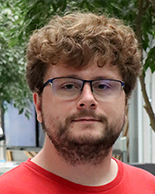 Spencer Combs is pursuing his master’s degree in accelerator physics at MSU. His advisor is Kenji Saito, professor of physics from the MSU Department of Physics and Astronomy. For his research, he is focusing on the topic of an investigation into the effects of magnetic shielding and the thermoelectric seebeck coefficient for superconducting radio frequency (SRF) applications. He joined the ASET program in 2023.
Spencer Combs is pursuing his master’s degree in accelerator physics at MSU. His advisor is Kenji Saito, professor of physics from the MSU Department of Physics and Astronomy. For his research, he is focusing on the topic of an investigation into the effects of magnetic shielding and the thermoelectric seebeck coefficient for superconducting radio frequency (SRF) applications. He joined the ASET program in 2023.
What are your research responsibilities?
My responsibilities as a research assistant involve developing a design for both samples and a testing apparatus to measure the seebeck coefficient. In addition, I analyze data taken from magnetic shield flux measurements to understand trends in the magnetic field surrounding the metallic shield. I also review supporting literature to build an understanding of the material that comprises my research, and assist with chemical etching experiments performed on niobium surfaces.
What interested you about the ASET program/pursuing this educational path?
What interested me the most about the ASET program was the opportunity to work with materials and faculty that directly contributed to the progress of modern day accelerator science.
How do you think participating in the ASET program at MSU will benefit for your career?
I believe that due to my participation within the ASET program, I will not only have a significant step forward in my understanding of both the engineering and physics involved in maintaining, operating, and improving accelerators, I will also have access to opportunities in the field that I previously had no access to.
What career path do you plan to pursue at this point?
Thanks to the work I have performed as part of the ASET program, I plan to further pursue a career path in accelerator science within national laboratories, and potentially educating new students entering the field.
The ASET program can support your stay at a national laboratory – at which laboratory are you interested in further your training and what are your research interests there?
I am interested in furthering my training at the Thomas Jefferson National Laboratory in Newport News, Virginia. The research interests I wish to pursue include SRF Development, and Cavity development, however, I am open to the possibility of different areas of research pertaining to or consisting of accelerator science.
Would you recommend the ASET program to other students? Why?
I would recommend the ASET program to other students for three reasons. The first would be the ability to work with faculty that have years of experience within the field of research they pursue. The second would be the opportunity to work at other national laboratories within the United States, and their affiliated departmental programs. The third, and most important in my opinion, is that the ASET program provides the ability for students to make a mark in their field of interest, whether it be through papers or potential journal publications. It is a unique opportunity that should not be missed out on.
Thesis defense date: 29 April 2025
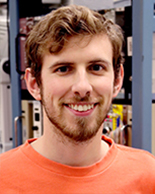 Sean Dziubinski is a PhD student pursuing a degree in physics at MSU. He is advised by Steven Lidia, FRIB senior physicist and adjunct professor of physics and electrical and computer engineering. Sean’s areas of research is the development of a novel Energy Loss optical Scintillation System (ELOSS) for heavy-ion particle identification. He has been a part of the ASET program since 2019.
Sean Dziubinski is a PhD student pursuing a degree in physics at MSU. He is advised by Steven Lidia, FRIB senior physicist and adjunct professor of physics and electrical and computer engineering. Sean’s areas of research is the development of a novel Energy Loss optical Scintillation System (ELOSS) for heavy-ion particle identification. He has been a part of the ASET program since 2019.
What are your research responsibilities?
Research, design, build, install and test nearly every component of ELOSS including the optical readout, mechanical vessel, gas handling system (recirculation, purification and recovery of pure xenon), and digital acquisition. Most of the initial research and design was completed before I started on this project, but to reach optimum performance some components need to be redesigned.
What interested you about the ASET program/pursuing this educational path?
The opportunity to work at a national laboratory and have access to experts in the field is too good to pass up. The resources available to me make pursuing new ideas easier, which is essential to learning, in my case.
How do you think participating in the ASET program at MSU will benefit for your career?
Through ASET and MSU, I have been able to work at a world-class facility for rare isotope production where I can study cutting-edge detector development for low energy nuclear physics. This experience has pushed me towards a career in nuclear physics instrumentation that will hopefully reach an internationally recognized level early in my career.
What career path do you plan to pursue at this point?
I would like to pursue a career path that allows me enough freedom to research novel concepts in detector physics and make an impact in the field. A dedicated detector lab is where I belong.
The ASET program can support your stay at a national laboratory – at which laboratory are you interested in further your training and what are your research interests there?
I have dedicated plenty of time to noble gas detectors, specifically xenon, so seeing and learning about the Large Underground Xenon (LUX) detector at Argonne would be beneficial.
Would you recommend the ASET program to other students? Why?
Yes, you can easily find something you like in the many research areas that fall under the accelerator science and engineering umbrella and development has been a continued effort for decades now with potentially decades more to go, so having at least a background in accelerator science will only benefit you.
Thesis defense date: 25 May 2025
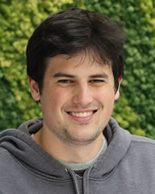 Alec Gonzalez is a PhD student pursuing a degree in physics at MSU. He is advised by Peter Ostroumov, associate director of the FRIB Accelerator Systems Division and professor in MSU’s Department of Physics and Astronomy. The working title of Alec’s thesis is “Investigations Toward Power Ramp-up of FRIB and Increasing Scientific Reach.” A major part of his research is identifying the cause of beam losses in the FRIB accelerator and figuring out how to mitigate them.
Alec Gonzalez is a PhD student pursuing a degree in physics at MSU. He is advised by Peter Ostroumov, associate director of the FRIB Accelerator Systems Division and professor in MSU’s Department of Physics and Astronomy. The working title of Alec’s thesis is “Investigations Toward Power Ramp-up of FRIB and Increasing Scientific Reach.” A major part of his research is identifying the cause of beam losses in the FRIB accelerator and figuring out how to mitigate them.
What are your research responsibilities?
I have worked on multiple projects since starting at MSU. I have designed cavities and written an application to verify cavity synchronous phases. I am currently working on simulating beam losses in the accelerator and improving the accuracy of our models to reduce beam tuning time.
What interested you about the ASET program/pursuing this educational path?
During undergrad, I did applied nuclear physics research using a small accelerator and I found that the accelerator was the most interesting part of the research. Before my senior year, I did the summer Research Experience for Undergraduates (REU) at MSU and I saw one of the research topics I could choose was accelerator physics. I chose that topic and found it interesting and enjoyable. I ended up working with Peter Ostroumov for the summer and he heavily promoted the ASET program and told me I should apply.
How do you think participating in the ASET program at MSU will benefit for your career?
Participating in the ASET program has been extremely valuable for my career. I am able to research at a state-of-the-art laboratory with cutting-edge technology. I am being advised and mentored by world experts in accelerator physics. The ASET program at MSU is extremely beneficial for graduate students.
What career path do you plan to pursue at this point?
I plan to pursue a career as an accelerator physicist.
The ASET program can support your stay at a national laboratory – at which laboratory are you interested in further your training and what are your research interests there?
I have visited and toured some national laboratories, but I am interested in continuing to work at FRIB.
Would you recommend the ASET program to other students? Why?
I would highly recommend the ASET program to students interested in accelerator science. FRIB is a world-class facility with excellent scientists. The mentors and advisors are very good at working with graduate students and preparing them for their careers. They also have strong connections with national laboratories.
Thesis defense date: 20 January 2025
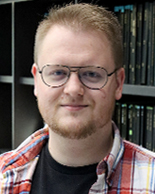 Benjamin Sims is a PhD student pursuing degrees in electrical engineering and physics at MSU. He is advised by Sergei Baryshev, assistant professor at MSU’s College of Engineering. Benjamin’s area of research includes high brightness photoinjectors. He has been a part of the ASET program since 2020.
Benjamin Sims is a PhD student pursuing degrees in electrical engineering and physics at MSU. He is advised by Sergei Baryshev, assistant professor at MSU’s College of Engineering. Benjamin’s area of research includes high brightness photoinjectors. He has been a part of the ASET program since 2020.
What are your research responsibilities?
My research responsibilities include simulations of electron beamlines and the design and characterization of RF cavities.
What interested you about the ASET program/pursuing this educational path?
The strong connection to the national labs as well as the strong academic program at MSU.
How do you think participating in the ASET program at MSU will benefit for your career?
It has allowed me to for strong connections with multiple national labs.
What career path do you plan to pursue at this point?
Scientist at a national lab.
The ASET program can support your stay at a national laboratory – at which laboratory are you interested in further your training and what are your research interests there?
I have worked with SLAC where I have done beamline simulations of the LEI being worked on at FRIB.
Would you recommend the ASET program to other students? Why?
I would recommend the ASET program to any students with an interest in the accelerator field. The ASET program provides connections and opportunities to interact with the national labs that can be the start of a strong career.
Thesis defense date: 26 May 2021
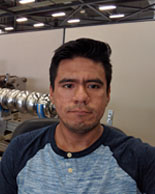 Crispin Contreras-Martinez is pursuing a PhD in physics at MSU, with Professor of Physics Peter Ostroumov serving as his advisor. For his research topic, he is studying the electromagnetic and mechanical properties of medium beta superconducting elliptical cavities.
Crispin Contreras-Martinez is pursuing a PhD in physics at MSU, with Professor of Physics Peter Ostroumov serving as his advisor. For his research topic, he is studying the electromagnetic and mechanical properties of medium beta superconducting elliptical cavities.
What are your research responsibilities?
My thesis project is to understand the limitations of fast tuners based on piezo actuators. Superconducting (SC) linear accelerators (linacs) can provide high power proton and ion beams in continuous wave (CW) or pulsed mode operation. Linacs have become an important tool for research in many fields such as high energy physics, nuclear physics, and material science just to name a few. One of the main components of a linac are the SC cavities which accelerate the particles via coupling to the radio-frequency (RF) power. Cavities in CW mode are operated at very high loaded quality factor (QL), which results in a small bandwidth making them susceptible to noise which causes detuning. In the case of cavities operated in the pulsed mode, the main source of detuning will be caused by radiation pressure (Lorentz force detuning). These types of detuning can be compensated by using more RF power which can be very costly. Additionally, if the power coupler can’t provide enough power to compensate for the detuning, the cavity will not be able to maintain the accelerating gradient which will result in operational downtime. A cost-effective approach to mitigating the detuning has been shown with the use of piezo actuators for fast detuning. I am studying control algorithms and the development of a reliable piezo tuning systems with long lifetime for applications both in CW or pulsed linacs.
How do you think participating in the ASET program at MSU will benefit your career?
With the support of the ASET program, I will be able to continue my research at Fermilab and will stay here until I finish my PhD. Staying at Fermilab is essential for my thesis project since my collaborators have a lot of experience working with resonance control. While at Fermilab, I will work to develop algorithms and hardware for my project. With my results, I will be able to present my work at the International Particle Accelerator Conference (IPAC), the Linear Accelerator Conference (LINAC), or the International Conference on Superconducting Radiofrequency (SRF).
The ASET program can support your stay at a national laboratory – at which laboratory are you interested in further your training and what are your research interests there?
I’ve spent five months in Fermilab with the SCGSR grant (six months) that I obtained in October 2017. During this time, I worked with different tuners. I measured the stiffness of the tuners as well as the piezo stroke for the 650MHz cavity. I have also measured the piezo stroke at cold temperatures (2k operation) for 1.3 GHz Cavities and 3.9 GHz cavities which are used for the LCLS II project. I have also been exposed to the low-level RF (LLRF) system that is used as well as their data acquisition system. I’m eager to learn more about these systems since they are critical for the resonance control. Lastly, while at Fermilab, I learned about resonance control of a system and how to characterize it.
Thesis defense date: 18 April 2023
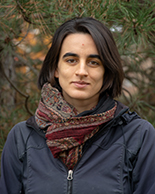 Kellen E. McGee is a graduate student from Oxford, Michigan, pursuing a PhD in nuclear or accelerator physics. She is researching the superconducting radio frequency on FRIB energy-upgrade elliptical cavities. Kellen joined the ASET program in Spring 2018.
Kellen E. McGee is a graduate student from Oxford, Michigan, pursuing a PhD in nuclear or accelerator physics. She is researching the superconducting radio frequency on FRIB energy-upgrade elliptical cavities. Kellen joined the ASET program in Spring 2018.
What are your research responsibilities?
The beta=0.65 644MHz cavities are in the prototype research and development stages. I perform exploratory measurements as we work to determine the production parameters for FRIB implementation. This includes field flatness measurements, quality-factor (Q-factor) measurements, and research regarding cavity processing techniques to increase Q factor.
How do you think participating in the ASET program at MSU will benefit for your career?
I think the program has the unique potential to connect me to opportunities in the world of national laboratories and accelerator physics should I choose that route. If I do not choose that route, I still value the technical introduction to truly unique systems engineering challenges.
The ASET program can support your stay at a national laboratory – at which laboratory are you interested in further your training and what are your research interests there?
I am interested in the Brookhaven National Laboratory or Lawrence Berkeley National Laboratory, and there are connections between my current research and ongoing work at Argonne National Laboratory and Fermi National Accelerator Laboratory.
The ASET program can support your stay at a national laboratory – at which laboratory are you interested in further your training and what are your research interests there?
I am not sure yet.
Thesis defense date: 9 April 2024
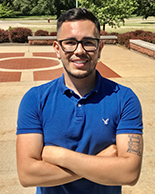 Cristhian Gonzalez-Ortiz is a PhD student from Bogotá, Colombia, pursuing a degree in physics at MSU. Professor of Physics Peter Ostroumov serves as his advisor. For his research topic, he is studying storage rings for low-energy radioactive isotope beams. Cristhian joined the ASET program in fall 2019.
Cristhian Gonzalez-Ortiz is a PhD student from Bogotá, Colombia, pursuing a degree in physics at MSU. Professor of Physics Peter Ostroumov serves as his advisor. For his research topic, he is studying storage rings for low-energy radioactive isotope beams. Cristhian joined the ASET program in fall 2019.
What are your research responsibilities?
I am looking into the main subsystems that compose a low-energy storage ring. Specifically, I am performing particle-tracking simulations focusing on the mass separation capabilities of such rings. Additionally, I am trying to estimate the operation conditions for the electron cooling system of such a ring. The end goal is to look at the feasibility and usability of building a low-energy heavy-ion storage ring at FRIB.
What interested you about the ASET program?
I think accelerator sciences is the intersection between fundamental physics and applied physics. It’s right there, in that sweet spot, where I find physics the most exciting and interesting. MSU’s ASET program gives me the proper tools to contribute to and succeed in this field of physics.
How will participating in the ASET program benefit your career?
MSU’s ASET program allows me to immerse successfully in the accelerator science world. All of the courses taught under this program allow me to build my theoretical knowledge and the intuition for the physical processes in question. The ASET program is also helping me build the right connections to make meaningful contributions to the field.
What career path do you plan to pursue?
Right now, my career plan is to graduate with my PhD and join a national laboratory as a research associate to put my fresh skills to work. Down the road, I would like to join a university as an associate professor.
At which laboratory are you interested in furthering your training, and what are your research interests there?
I am interested in furthering my training at Brookhaven National Laboratory, where I can contribute to the development of the EIC (Electron Ion Collider)—the next big project in American physics.
Would you recommend ASET to other students? Why?
I would definitely recommend the ASET program to other students because the people running it want you to succeed. Faculty in charge of the ASET program will not only help you develop the theoretical and practical skills for accelerator sciences, but they will also acknowledge you as an important piece of this field’s future. For me, that is very important.
Thesis defense date: 3 May 2023
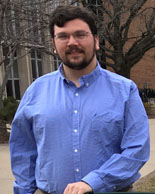 Michael Balcewicz is pursuing a PhD in physics at MSU with Professor Yue Hao serving as his advisor. He is from Aliso Viejo, California. For his research topic, he intends to research generalizing a square potential well beam model to accommodate multiple square wells. Michael joined the ASET program in Spring 2018.
Michael Balcewicz is pursuing a PhD in physics at MSU with Professor Yue Hao serving as his advisor. He is from Aliso Viejo, California. For his research topic, he intends to research generalizing a square potential well beam model to accommodate multiple square wells. Michael joined the ASET program in Spring 2018.
What are your research responsibilities?
My research topic is on generalizing a square potential well beam model to accommodate multiple square wells. The square wells are interesting to study because they are analytically solvable and can be used to study and better understand what physical parameters create instabilities in a beam. To this point however, only one potential well has been used for these models, which limits its applicability to real systems. Adding multiple square wells allows the model to more closely model a real beam.
How do you think participating in the ASET program at MSU will benefit your career?
Since I want to work at a national laboratory after graduation, doing my thesis research at national laboratory will help me get a foot in the door.
The ASET program can support your stay at a national laboratory – at which laboratory are you interested in further your training and what are your research interests there?
Brookhaven National Laboratory. They have a lot of interesting work with the possible upgrade to the high energy electron-ion collider as well as light source work at the National Synchrotron Light Source II.
Thesis defense date: 8 May 2023
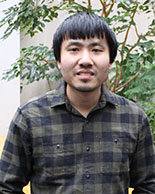 Elliot Lu is pursuing a PhD in physics at MSU, with Associate Professor of Physics Yue Hao serving as his advisor. For his research topic, he is studying computational and theoretical accelerator physics (thesis topic undecided). He has been in MSU’s Accelerator Science and Engineering Traineeship (ASET) program since 1 November 2017.
Elliot Lu is pursuing a PhD in physics at MSU, with Associate Professor of Physics Yue Hao serving as his advisor. For his research topic, he is studying computational and theoretical accelerator physics (thesis topic undecided). He has been in MSU’s Accelerator Science and Engineering Traineeship (ASET) program since 1 November 2017.
What are your research responsibilities?
I am not employed as a research assistant right now. My responsibility is to write code using particle-in-cell and fast-multipole methods with application to accelerator simulation. The aim is to familiarize myself with both the algorithms and underlying physics, in preparation for future research.
How do you think participating in the ASET program at MSU will benefit your career?
The ASET program will sponsor me for internships at national labs, giving me research experience I could not otherwise gain at MSU. Such experience will both aid my PhD candidacy and be esteemed by future employers, whether in academia or industry.
The ASET program can support your stay at a national laboratory – at which laboratory are you interested in further your training and what are your research interests there?
This summer, I am looking to intern at Lawrence Berkeley National Laboratory. I plan to do algorithm development for the Berkeley Lab Accelerator Simulation Toolkit (BLAST), especially in the area of electrostatic simulations (IMPACT).
Thesis defense date: 6 November 2020
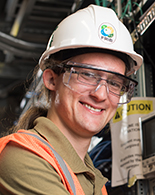 Chris Richard is pursuing a PhD in accelerator physics at MSU with Adjunct Professor of Physics Steven Lidia serving as his advisor. For his research topic, Chris is studying non-relativistic beam instrumentation and diagnostics.
Chris Richard is pursuing a PhD in accelerator physics at MSU with Adjunct Professor of Physics Steven Lidia serving as his advisor. For his research topic, Chris is studying non-relativistic beam instrumentation and diagnostics.
What are your research responsibilities?
My research focuses on accounting for non-relativistic effects in beam diagnostics. The electromagnetic fields from non-relativistic beams resemble those of charges at rest, causing the field extents on opposite sides of the beam pipe to differ. Beam diagnostics that rely on measuring the field at the pipe wall, such as button beam-position monitors (BPMs), are affected by this disparity in the fields. I am developing a helical pulse line that is capable of replicating the fields from non-relativistic beams. The pulse line will be used to calibrate for non-relativistic effects on a test stand.
Non-relativistic beams also have low rigidity, which allows their phase space to be measured using an Allison scanner. The measurements from an Allison scanner can be used to look for the formation of beam tails. It is important to minimize tails because they increase the beam size and can cause losses and damage to the accelerator. My research also involves developing a method of characterizing beam tails using action-angle coordinates. This method can then be used to study the tail formation and efficiency of scraping in the Proton Improvement Plan II Injector Test (PIP2IT) beamline at Fermilab.
How do you think participating in the ASET program at MSU will benefit your career?
Participating in the ASET program has given me the opportunity to perform research at Fermilab working with the PIP2IT beamline. This has given me hands-on experience with beam instrumentation and machine operation at PIP2IT.
The ASET program can support your stay at a national laboratory – at which laboratory are you interested in further your training and what are your research interests there?
I have spent four months at Fermilab through the ASET program. At Fermilab, I have worked with the PIP2IT beamline, which has provided a unique experience being able to work with a test beamline with non-relativistic beams. Because this beamline is still in development, I have been able to learn about many systems of an accelerator from low-level radio frequency (RF) to machine protection and the difficulties associated with developing these systems.
Participate in unique and exciting training and internship programs that lead to career success.
Make real advancements through research projects and a variety of professional development opportunities.
Train for specialized careers in in-demand fields.
Develop the skills needed for a successful career in accelerator science.
Attend seminars presented by experts in the accelerator science and engineering field.
Read theses and testimonials from current and former ASET graduate students.

